Origin of VM
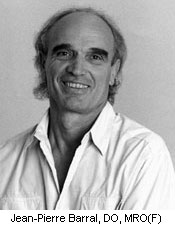 Osteopathy and other system of manual medicine have developed a variety of models for understanding the mechanics of proper and improper motion of the musculoskeletal system. In this pioneering work, that same structural vision is applied to the visceral system. The central premise of Visceral Manipulation is that the interrelationship of structure and function among the internal organs is at least as strong as that among the constituents of the musculoskeletal system; and that, like the musculoskeletal system, manipulation of the viscera can be beneficially used in the treatment of internal organ dysfunction. Jean-Pierre Barral, D. O. and Pierre Mercier, D. O. have developed an innovative framework of concepts and techniques based on extensive clinical experience as well as studies utilizing radiology, ultrasound and post-mortems, which they called Visceral Manipulation.
Osteopathy and other system of manual medicine have developed a variety of models for understanding the mechanics of proper and improper motion of the musculoskeletal system. In this pioneering work, that same structural vision is applied to the visceral system. The central premise of Visceral Manipulation is that the interrelationship of structure and function among the internal organs is at least as strong as that among the constituents of the musculoskeletal system; and that, like the musculoskeletal system, manipulation of the viscera can be beneficially used in the treatment of internal organ dysfunction. Jean-Pierre Barral, D. O. and Pierre Mercier, D. O. have developed an innovative framework of concepts and techniques based on extensive clinical experience as well as studies utilizing radiology, ultrasound and post-mortems, which they called Visceral Manipulation.
What is VM ?
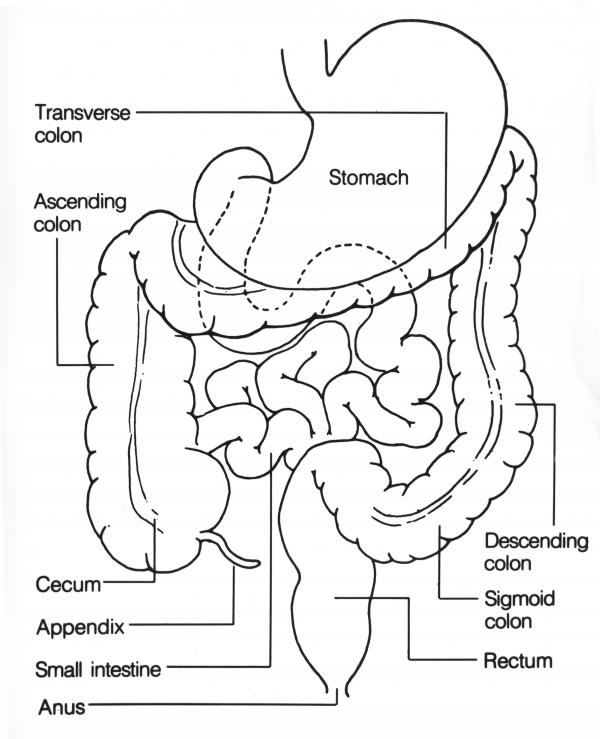 Visceral manipulation is a manual therapy consisting of light, gentle, specifically placed manual forces that encourage normal mobility, tone and inherent tissue motion of the viscera and their connective tissues. These manipulations have the potential to affect normal physiological function of individual organs, the systems they function within and the structural integrity of the entire body.
Visceral manipulation is a manual therapy consisting of light, gentle, specifically placed manual forces that encourage normal mobility, tone and inherent tissue motion of the viscera and their connective tissues. These manipulations have the potential to affect normal physiological function of individual organs, the systems they function within and the structural integrity of the entire body.
The hypothesis in Visceral Manipulation is that an organ or viscera in good health has physiological motion. This motion is an interdependent one because of the serous membranes which envelop the organ, and the fasciae, ligaments and other living tissues which bind it to the rest of the organism. Physiological motion can be divided into two components : visceral mobility and visceral motility. Visceral mobility is the movement of the viscera in response to voluntary movement, or to movement of the diaphragm in respiration. Visceral motility is the inherent, innate and intrinsic motion of the viscera themselves. All viscera should move and function properly if there is no restriction. The function of the organ will be impaired if there is any restriction or adhesion exists in an organ. And it leads to pathological changes in the organ itself and its related structure. The movement of the body will be compromised.
How is VM performed ?
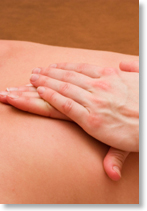 In session of Visceral Manipulation, the practitioners carry out the motility tests by gently placing their hand over the organ with a pressure of 20-100g (depending on the depth of the organ). The hand of the practitioner is totally passively follow the movement and ‘listen’ to the motility of the organ. The frequency, amplitude and direction of the motility are detected. A diagnosis can be made and the restriction is localized and classified (adhesion, fixation, ptosis or viscerospasm). Techniques are used to restart the mobility or motility of an organ by utilizing specific and gentle forces. By means of the gentle forces, the practitioner provides a stimulus to the body, and allows the body to respond and initiate the self correction processes. There are three general techniques of visceral manipulation, the direct techniques, indirect techniques and induction techniques.
In session of Visceral Manipulation, the practitioners carry out the motility tests by gently placing their hand over the organ with a pressure of 20-100g (depending on the depth of the organ). The hand of the practitioner is totally passively follow the movement and ‘listen’ to the motility of the organ. The frequency, amplitude and direction of the motility are detected. A diagnosis can be made and the restriction is localized and classified (adhesion, fixation, ptosis or viscerospasm). Techniques are used to restart the mobility or motility of an organ by utilizing specific and gentle forces. By means of the gentle forces, the practitioner provides a stimulus to the body, and allows the body to respond and initiate the self correction processes. There are three general techniques of visceral manipulation, the direct techniques, indirect techniques and induction techniques.
What problems can VM help ?
The most common indications of visceral manipulation are :
All sequel of pulmonary or pleural illnesses, Cervicobrachial neuralgias, Neck pain, upper back pain or intercostals neuralgia, Gastroesophageal problems, Hepatobiliary problems, Decrease in hepatic metabolism, Biliary stasis, Nervous depression, Decrease in immune responses, Gall bladder dysfunction, Duodenum ulcer, Constipation, Recurrent urinary tract infections, Low back pain, Sciatica, Musculoskeletal disorders of the lower extremities, Incontinence, Uterine malpositioning, Dyspareunia, Post operation on the female urogenital system – such as surgery for cysts, fibromas and caesarean sections, Menstrual pain, Hemorrhoids, Varicosities of the veins of the lower limbs, Leucorrhea, Polyuria, Cystitis, Coccygeal problems.

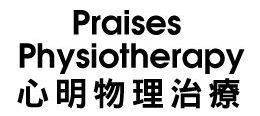
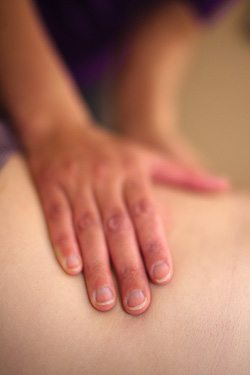


 Visceral manipulation is a manual therapy consisting of light, gentle, specifically placed manual forces that encourage normal mobility, tone and inherent tissue motion of the viscera and their connective tissues. These manipulations have the potential to affect normal physiological function of individual organs, the systems they function within and the structural integrity of the entire body.
Visceral manipulation is a manual therapy consisting of light, gentle, specifically placed manual forces that encourage normal mobility, tone and inherent tissue motion of the viscera and their connective tissues. These manipulations have the potential to affect normal physiological function of individual organs, the systems they function within and the structural integrity of the entire body.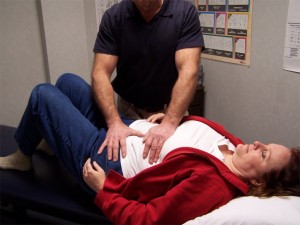
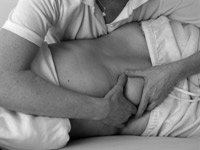
 In session of Visceral Manipulation, the practitioners carry out the motility tests by gently placing their hand over the organ with a pressure of 20-100g (depending on the depth of the organ). The hand of the practitioner is totally passively follow the movement and ‘listen’ to the motility of the organ. The frequency, amplitude and direction of the motility are detected. A diagnosis can be made and the restriction is localized and classified (adhesion, fixation, ptosis or viscerospasm). Techniques are used to restart the mobility or motility of an organ by utilizing specific and gentle forces. By means of the gentle forces, the practitioner provides a stimulus to the body, and allows the body to respond and initiate the self correction processes. There are three general techniques of visceral manipulation, the direct techniques, indirect techniques and induction techniques.
In session of Visceral Manipulation, the practitioners carry out the motility tests by gently placing their hand over the organ with a pressure of 20-100g (depending on the depth of the organ). The hand of the practitioner is totally passively follow the movement and ‘listen’ to the motility of the organ. The frequency, amplitude and direction of the motility are detected. A diagnosis can be made and the restriction is localized and classified (adhesion, fixation, ptosis or viscerospasm). Techniques are used to restart the mobility or motility of an organ by utilizing specific and gentle forces. By means of the gentle forces, the practitioner provides a stimulus to the body, and allows the body to respond and initiate the self correction processes. There are three general techniques of visceral manipulation, the direct techniques, indirect techniques and induction techniques.